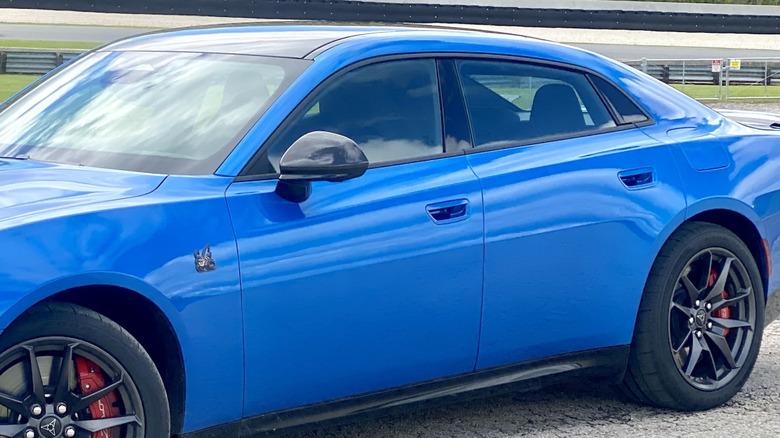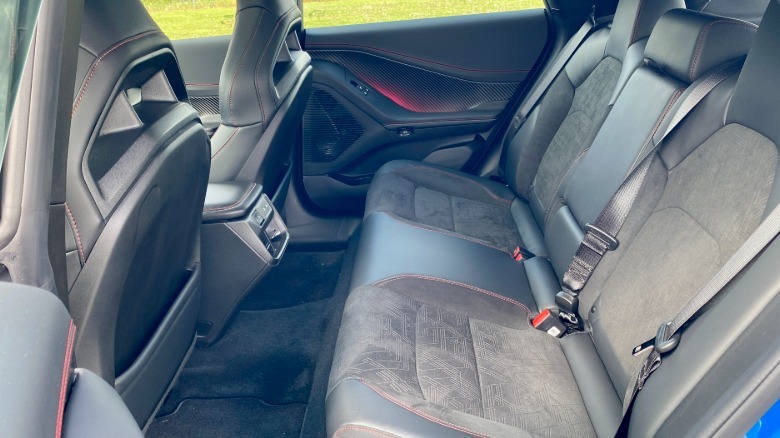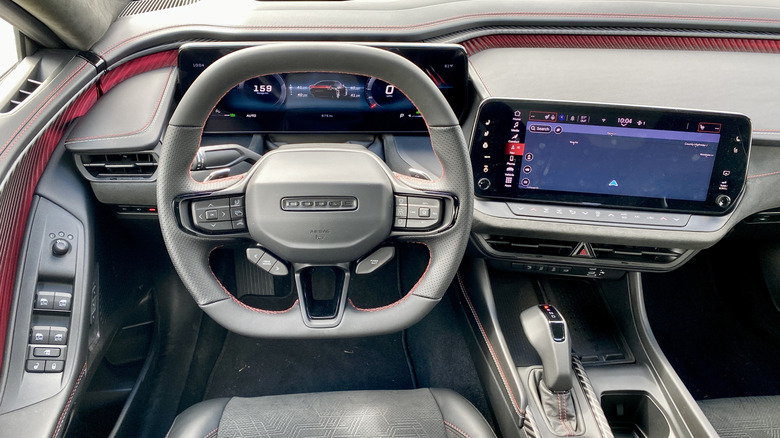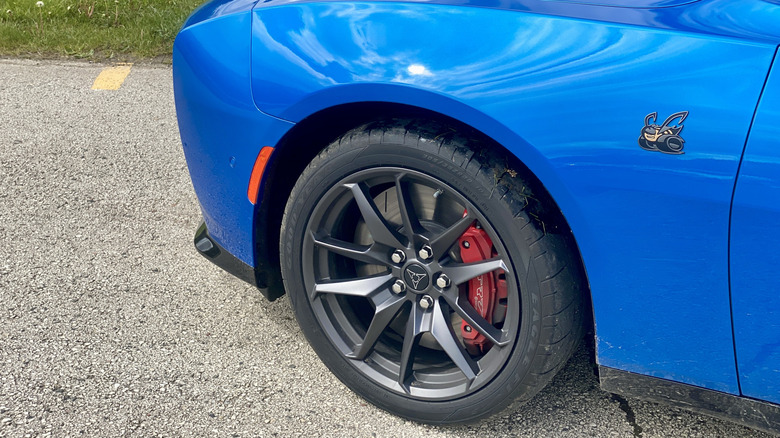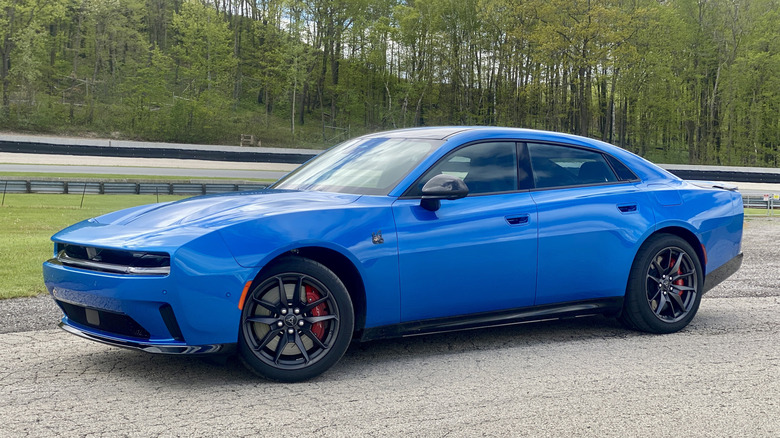2026 Dodge Charger Daytona 4-Door First Drive: Can Two More Doors Save The Muscle EV?
It's a bold premise: Launch an all new electric car that honors the muscle car heyday from nearly 60 years ago. We've come to expect bold premises from Dodge, who milked retro car designs for 15 years in the last generation of the Challenger coupe and Charger sedan. But to bill its first EV—the 670-horsepower Dodge Charger Daytona—as the evolution of the muscle car requires a cognitive leap that the market hasn't quite adapted to.
Launched late in 2024, only 1,947 units of the Dodge Charger Daytona coupe were sold in the first quarter of 2025, according to Cox Automotive. That's low. In the same time, Ford sold 11,607 Mustang Mach-Es and Jeep moved more Wagoneer S models that share the Charger Daytona's platform. Additionally, in the first quarter EV sales spiked 10% year-over-year due to tariff and pricing uncertainty, and with consumers rushing to take advantage of the $7,500 EV tax credit while it's still there.
It's way too early to make a judgment on its success, but Dodge has adjusted by suspending the better-selling entry-level R/T model for the 2026 model year due to tariff uncertainty. Dodge also bumped back the Charger Daytona four-door sedan to a 2026 model expected in the second half of this year.
Here's the thing: those two extra doors make for a better EV. But I can't say it makes for a better muscle car.
What are the differences between the Charger Daytona coupe and sedan?
The two-door and four-door Charger Daytona are mechanically identical and essentially the same—same length, wheelbase, width, cargo volume, passenger volume. The same long, low, and wide stance applies to both models, and eye-catching features such as the R-Wing aerodynamic vents on top of the square nose and staggered, low-profile tires apply the winning muscle car formula.
But Dodge moved the B-pillar forward to accommodate two more doors, and made the rear seats easier for humans, dogs, and our stuff to get in and out of. That's it. And a rear-seat reminder. Eljay Robertson, Dodge Charger 4-door product manager, said there's no change in rigidity and stiffness, and the performance specs remain the same.
Those doors add 50 pounds to the curb weight, to a porky 5,828 pounds. Therein lies the inherent contradiction in trying to market a car weighed down by a 94-kwh battery pack (100.5 kwh gross) as a muscle car, which, like any performance car, still rely on a relatively low power-to-weight ratio.
It has hellish levels of power, Hellcat-like 670 horsepower and 627 pound-feet of torque.
2026 Charger Daytona sedan is Hellcat quick
On successive days around Road America in Elkhart Lake, Wisc., the Charger Daytona Scat Pack blew my mind. As an EV. Even though the famed track was open for the Midwest Automotive Media Association's 2025 Spring Rally on May 21, Dodge didn't want to debut its latest vehicle on a surface inundated by rain and novices. Still, testing out the PowerShot—a steering wheel button opposite the drive mode toggle that unlocks 40 hp extra for 10 seconds to get to that 670-hp mark—took my breath away so expeditiously that the gimmick could've been dubbed GutShot. Same with Launch Control.
Two 250 kW permanent magnet motors power both axles for standard all-wheel drive and a 0-60 mph time of 3.3 seconds. The quarter-mile arrives in just 11.5 seconds. It's stupid quick. It's planted in curves due to its weight, and it's easy to see how the limited-slip rear differential could help get it around corners. But you feel that weight in turns. Even though the hexagonal steering wheel feels good and chunky in the hands, and the steering is precise, the road and its surfaces feels like a distant, disconnected element.
2026 Charger Daytona excels at cruising
That's also where the Charger Daytona Scat Pack sedan excels. Adaptive damping soaks up most of the spring road rash I encountered, even on 20-inch wheels covered in low-profile Goodyear Eagle F1 Supercar 3 305/35 front and 325/35 rear tires. It was smooth, calm, and quiet, a sophisticated Dr. Jekyll to Mr. Hyde's muscle car madman.
I didn't tap into Drift or Donut mode to smoke those performance tires that come with the $4,995 Track Package (based on 2025 pricing; 2026 pricing will be announced soon). I played with Sport and Track modes, which increasingly dial up the decibels on the ballyhooed Fratzonic exhaust speakers that replicate a Hellcat V-8. It sounds pretty good in passing, from the outside, and could be a neat cars and coffee party trick, but after about 10 minutes in Sport mode I shut it off via the 12.3-inch touchscreen that has the performance pages to complement the digital gauges in the 16.0-inch cluster.
It's better quiet. Aside from the thrum of the tires, the cabin remains isolated from road noise. Rear headroom could squeeze a 6-footer, but shoulder- and legroom is exceptional. Fold down the rear seats to expand the hatch to 38.5 cubic feet, which Dodge says is best-in-class.
That class is suspect. Robertson said it's based on the IIHS's classification as a full-size sedan, which includes the Toyota Crown Signia and the Ford Mustang. Huh?
Are 4 doors enough?
Expectations are a tough thing to manage, and even tougher to predict. Maybe Dodge had to assure its brethren that it would stay true to its iconoclast badboy reputation as it still had gas-powered Challengers and Durangos to sell. Maybe it needs the Sixpack to arrive sooner than later in 2025. Instead of a Hemi, the Charger Sixpack rocks Dodge's Hurricane twin-turbo 3.0-liter six-cylinder engine, rated at up to 550 hp. The Sixpack will also be sold in two- and four-door editions.
Since Dodge is keen on looking back, and using its past as a barometer of its future, then it should expect better sales for the four-door Daytona. Since the Challenger returned for its third act in 2008, the Charger sedan outsold it every year. Most years, except for its last year, those extra doors resulted in about 50% more sales on average than the two-door Challenger.
The point is that Dodge shoppers are like most other car shoppers in preferring four doors to two. It just so happens that the four-door Charger Daytona also makes for a better EV.

